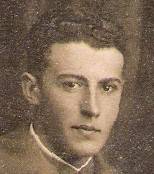The first gudari was killed in Albiztur, not in Bidania
- Karlos Almorza is a PhD in History and researcher at the Aranzadi Society of Sciences. In recent years, Saseta is researching the Defense System with a working team. Almorza has advanced in the advancement of the works and has explained the final finding of the research in the portal of Tolosaldea. In this way, the Saseta Defence System would extend to Albiztur.

Although in the history of our country during the twentieth century the events of the so-called Spanish War 1936-1939 are generally known, many details have been lost. 40 years ago, it was decided not to investigate what happened in the war. Politicians made this decision, and the university looked away, as if it weren't their job. With the exception of the works of a few researchers, the university, in general, left out of Contemporary History what happened in 36-39. So today, 83 years later, we continue to investigate these events.

A few years ago we began to investigate what happened in the surroundings of Hernio during the Spanish War. So we said in the books about the Azpeitia Command and the Saseta Defense System about Mikel Alberdi:
‘It should therefore be noted that the Azpeitia Defence Board was limited from the outset to consolidating the large area it controlled and to developing the Basque militias under the command of Captain Saseta. Captain Saseta was appointed as the chief commander of the militias for that purpose and, on many fronts, more than an attack, they dedicated themselves to resistance. Murumendi, Beizama, Bidania-Goiatz and Hernio were in charge of controlling the first actions on the south-southeast defensive line.
As a result, the Basque militias were at the gates of Tolosa, which had been occupied since 11 August. In these war activities it was fundamental that the mountaineers of Euskal Mendigoizaleen Batza knew the surroundings very well. The mountaineers lost their leader, Mikel Alberdi, in one of their raids in Bidania on 16 August.”
“Born in Madrid in 1907, he was the first Gudari killed at the Azpeitia Command, but Mikel Alberdi lived in Tolosa. He was one of the main leaders of the Gipuzkoa Mendigozales Board (BBCs). On 15 August 1936, when he was running some 300 mountaineers, he died in an incursion into Bidania. Thus, Mikel Alberdi became the first Gudari declared dead on the war front. His body was transferred to Azpeitia, where he was guarded by the Municipal Police of Donostia-San Sebastián. Then he was buried in Zarautz.’
It must be understood that both the witnesses and those who were there said that Mikel Alberdi was killed in Bidania and that everyone else followed that version. This was expressed in the documents written at that time: all the corners, the death documents written in the courts of Bidania and Tolosa, as well as the documents of the diocese of Zarautz.
.jpg)
He was killed in Albiztur, not in Bidania
Meltxor Otamendi, a resident of Tolosa, has explained this to us after beginning the investigations and excavations in the south of Hernio.
Meltxor Otamendi explained to the members of the Aranzadi Society of Sciences that we are analyzing the Saseta Defense System the events that it so well recalls. From the research group we have to thank Otamendi for his testimony.
Bidania is the hometown of Meltxor Otamendi, and Alberdi is believed to have been killed near the Berazeaga Manor, where he was born. He clearly explained to us where he had seen the trace of blood left by Mikel Alberdi and the wooden cross that Meltxor's father had put in the place where they had killed him, and how he had prayed several times in that place.
On the border between Bidania and Albiztur a stone wall is raised, marked in red in the lower image. To the left of the Rarra is Bidania and to the right Albiztur. In the photo, in front of Meltxor Otamendi is the place where Mikel Alberdi was killed, for a meter in the land of Albiztur.
And so we'll have to write it down and teach it from now on.
.jpg)
Segundo Hernandez preso anarkistaren senide Lander Garciak hunkituta hitz egin du, Ezkabatik ihes egindako gasteiztarraren gorpuzkinak jasotzerako orduan. Nafarroako Gobernuak egindako urratsa eskertuta, hamarkada luzetan pairatutako isiltasuna salatu du ekitaldian.




.JPG)

















